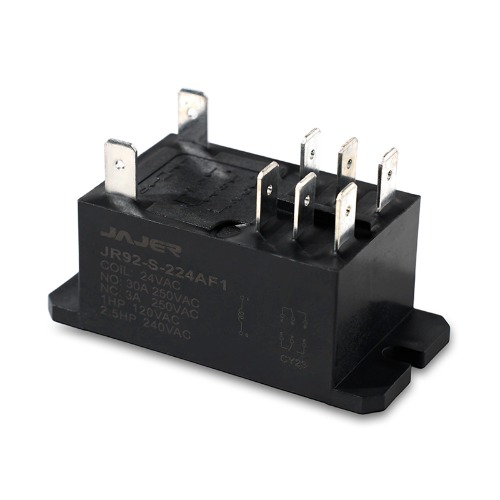In smart homes, relays are integrated into modules or gateways (wired or wireless) that connect sensors, actuators, and controllers. These modules often use a General Purpose Relay for regular loads (lighting, blinds, small motors). But for heavier loads, or when durability and reliability are required, Industrial Control Relay may be preferred.
According to industry discussion, smart home gateways and control modules increasingly rely on wired relays to manage circuits in a modular fashion. For instance, relays enable timed switching, load shedding, and isolation of control circuits from mains voltage.
Demand Patterns That Favor Industrial Control Relays
In smart buildings or premium residential projects, system design may require:
Switching HVAC compressors, large pumps, or ventilation systems
Managing power to EV charging stations
Integrating with power systems, microgrids, or renewable energy installations
Ensuring long-life cycling under frequent on/off control
In those scenarios, using an Industrial Control Relay ensures the relay can handle higher currents, more switching cycles, voltage transients, and harsher electrical environments.

How Industrial Control Relays Are Applied in Smart Homes & Automation
Let’s look at specific application cases where Industrial Control Relay is favored, including how it cooperates with General Purpose Relay in system design.
1. HVAC & Climate Control Subsystems
Heating, Ventilation, and Air Conditioning (HVAC) systems often represent one of the highest loads in a building. Control circuits (thermostats, sensors) feed signals to relays which then engage compressors, fans, dampers, or pumps. In this chain:
A General Purpose Relay can act on thermostat signals, interlocks, or minor switching
An Industrial Control Relay handles the actual power switching for compressors or large motors
This split ensures the heavy-duty switching is managed by durable, robust relays that resist wear and electrical stress.
2. Smart Pumps, Water & Irrigation Control
In modern smart homes or estates, water systems (pumps, filtration, cisterns, irrigation) often run on automated schedules. These devices may demand substantial current and must endure frequent cycling. Industrial control relays are well suited here.
3. EV Charging and Energy Management
As homes integrate electric vehicle (EV) chargers and local energy generation (solar, battery storage), relay control becomes more critical. Industrial relays can switch charging circuits, manage load sharing, and integrate with energy management systems. In microgrid or hybrid energy setups, these relays must handle surges, inrush currents, and dynamic switching.
4. Automation of Curtains, Shutters, Blinds with High Torque Motors
Motorized blinds or shutters sometimes require currents beyond the ability of light relays, especially in premium homes or large-area setups. In those cases, Industrial Control Relays are safer for switching these motors reliably over many cycles.
5. Remote Control / IoT Integration
Many smart home relay modules today include wireless or IoT-enabled control. Some “smart relays” conceptually are built on general-purpose or industrial-grade relay cores, wrapped in communication modules so they can be controlled remotely.
In such designs, the communication layer can decide when to switch circuits, then send a signal to a relay driver. The underlying hardware may use either General Purpose or Industrial Control relays depending on load and reliability needs.
Smart homes are no longer just about dimming lights or scheduling appliances—they are evolving into integrated systems that may demand industrial-level performance. Therefore, Industrial Control Relays are becoming increasingly relevant even in home automation contexts, especially when handling heavier loads or high-reliability tasks.
Quick Contact
Yueshang Innovation Park, Wengyang Street, Yueqing City, Zhejiang, China
Pages
Stay In Touch
If you have any questions or need help, feel free to contact with our team.